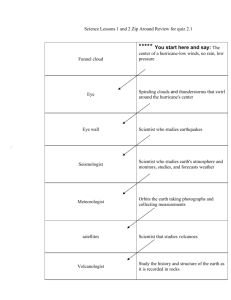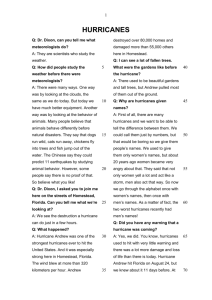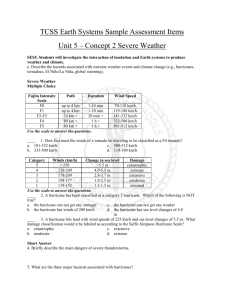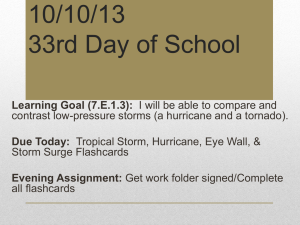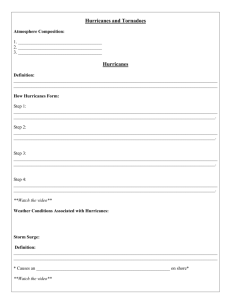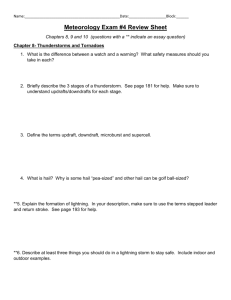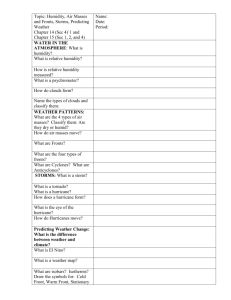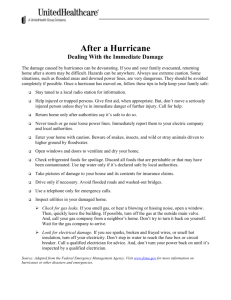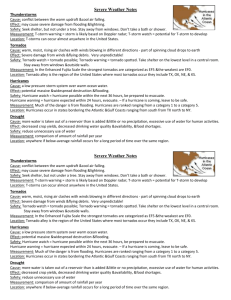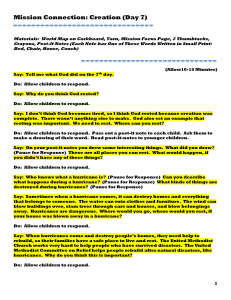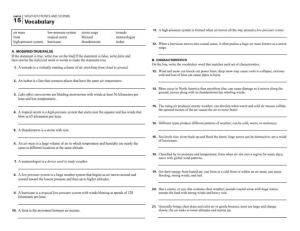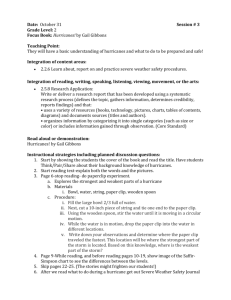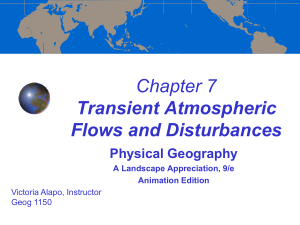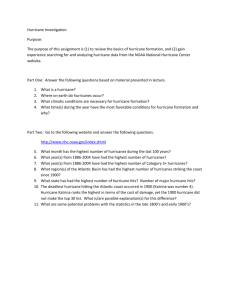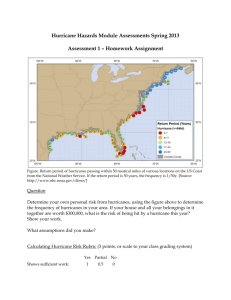Chapter 7 Transient Atmospheric Flows and Disturbances
advertisement
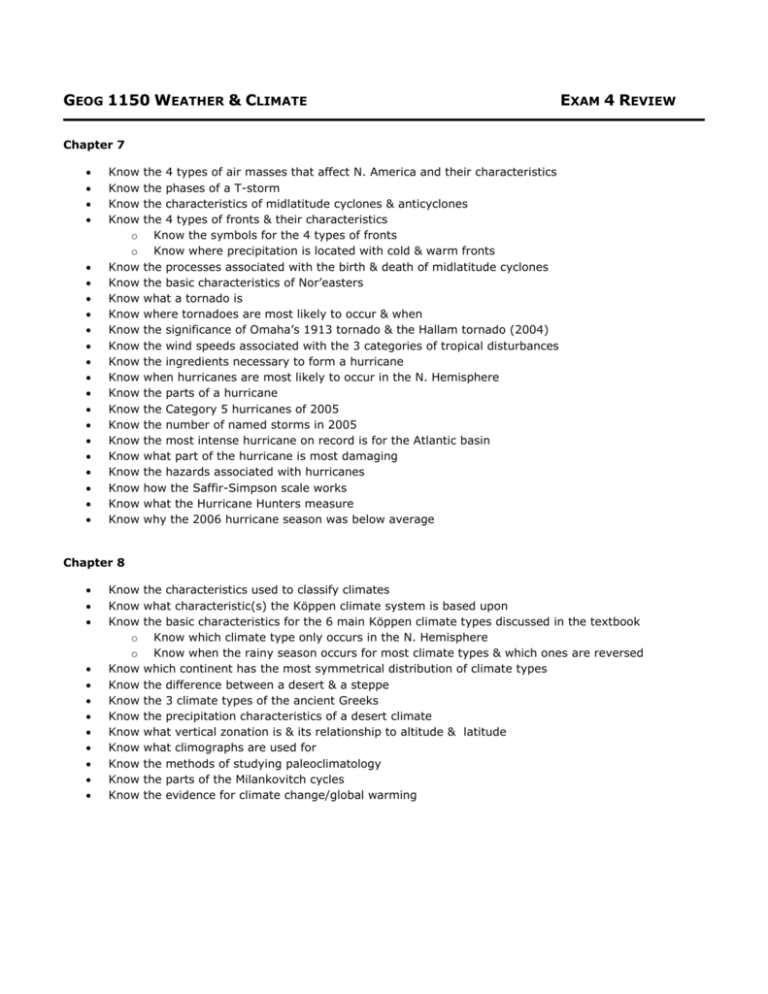
GEOG 1150 WEATHER & CLIMATE EXAM 4 REVIEW Chapter 7 Know Know Know Know o o Know Know Know Know Know Know Know Know Know Know Know Know Know Know Know Know Know the 4 types of air masses that affect N. America and their characteristics the phases of a T-storm the characteristics of midlatitude cyclones & anticyclones the 4 types of fronts & their characteristics Know the symbols for the 4 types of fronts Know where precipitation is located with cold & warm fronts the processes associated with the birth & death of midlatitude cyclones the basic characteristics of Nor’easters what a tornado is where tornadoes are most likely to occur & when the significance of Omaha’s 1913 tornado & the Hallam tornado (2004) the wind speeds associated with the 3 categories of tropical disturbances the ingredients necessary to form a hurricane when hurricanes are most likely to occur in the N. Hemisphere the parts of a hurricane the Category 5 hurricanes of 2005 the number of named storms in 2005 the most intense hurricane on record is for the Atlantic basin what part of the hurricane is most damaging the hazards associated with hurricanes how the Saffir-Simpson scale works what the Hurricane Hunters measure why the 2006 hurricane season was below average Chapter 8 Know Know Know o o Know Know Know Know Know Know Know Know Know the characteristics used to classify climates what characteristic(s) the Köppen climate system is based upon the basic characteristics for the 6 main Köppen climate types discussed in the textbook Know which climate type only occurs in the N. Hemisphere Know when the rainy season occurs for most climate types & which ones are reversed which continent has the most symmetrical distribution of climate types the difference between a desert & a steppe the 3 climate types of the ancient Greeks the precipitation characteristics of a desert climate what vertical zonation is & its relationship to altitude & latitude what climographs are used for the methods of studying paleoclimatology the parts of the Milankovitch cycles the evidence for climate change/global warming



